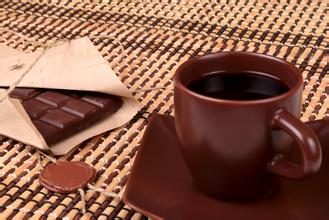Flavor description of Salvadoran Coffee introduction of Grinding scale varieties in Taste producing area
Flavor description of Salvadoran Coffee introduction of Grinding scale varieties in Taste producing area
The coffee beans from the estate are washed at Mauricio Salaverria's El Divisadero processing plant in Ataco, and then evenly dried in an African elevated shed bed with the help of sun and ventilation. Following in the footsteps of his parents and grandparents, Mauricio has been associated with coffee since childhood, especially the Himalayan estate, which focuses on boutique coffee, is located in the famous producing area of Santa Ana in the Apaneca Mountains at an altitude of 1500 meters, and is one of the few estates managed by Aida Batlle. The varieties planted in bourbon-based coffee fields are endless, and most of them are harvested by machinery, which is in line with economic benefits. When 75% of the coffee fruit in the coffee garden turns red, mechanical harvesting is started, followed by the same pre-washing operation, which is moved into the sink to remove floating beans, sift out the sunken beans, and then use a large pulp screening machine to dig out the pulp and remove the pods covered with pectin. The next stage is separate from the washing method: the sticky pods do not need to be moved into the tank to ferment, but to the outdoor bean drying farm. Because of the dry climate in Brazil, the sticky pectin on the pods will harden in about a day or so. Then use a large number of manpower to turn up and down, so that the pods dry evenly inside and outside, so as not to return to moisture and stink. For about two to three days, with the help of the natural forces of sunlight and dry climate, the pods can achieve a certain degree of dehydration. Then further dry with a dryer, the water content is reduced to 10.5%, and the pods are stored in a special container for about 10 days to further mature, in order to stabilize the quality, remove the sheepskin (pods) before export, remove the coffee beans, and pack them in grades.
In the early 1990s, guerrilla warfare greatly damaged the country's national economy, reducing coffee production from 3.5 million bags in the early 1970s to 2.5 million bags in 1990-1991. The eastern part of the country was most affected by guerrilla warfare, and many farmers and workers were forced to leave the manor. The shortage of funds has led to a sharp drop in coffee production, from 1200 kg per hectare in the past to less than 900kg per hectare today
El Salvador boutique coffee is concentrated in the volcanic rock producing areas of Santa Ana in the west and Charantanan fruit in the northwest. The top 10 cup tests in recent years almost all come from these two producing areas, with an elevation of 9-1500 meters above sea level, mainly bourbon (68%). Followed by Pacas (29%), mixed-race Pakamara, du Laai and Kaddura accounted for only 3%
The coffee beans from the estate are washed at Mauricio Salaverria's El Divisadero processing plant in Ataco, and then evenly dried in an African elevated shed bed with the help of sun and ventilation. Following the career of his parents and grandparents, Mauricio has been associated with coffee since childhood, especially focusing on the cultivation of boutique coffee

Important Notice :
前街咖啡 FrontStreet Coffee has moved to new addredd:
FrontStreet Coffee Address: 315,Donghua East Road,GuangZhou
Tel:020 38364473
- Prev

Flavor description of El Salvador Mercedes coffee beans taste characteristics of varieties regional treatment method
The flavor of Salvadoran Mercedes coffee beans describes the characteristics of the varieties produced by the regional treatment method, formed by the latest government of El Salvador in June 2014. The main cabinet members are Vice President Oscar Ortiz (Oscar Ortiz), Foreign Minister Ugorohr Martinez Bonillia (Hugo Roger Martnez Bonilla), and Finance Minister Carlos Caceres.
- Next

Taste and Flavor characteristics of Rosa Coffee introduction to the price of jadeite manor at drinking temperature
The taste and flavor characteristics of rose coffee: introduction to the price of the jadeite manor after breaking the dregs: take out the scum: start tasting: record at any time: summarize the test records of the cup for four people. It is concluded that the first place is the same batch of Gaixia baked by the author in Beijing and baked in Colombia. Colombian Gesha coffee brewed by hand after the cup test: Colombian Gesa Coffee characteristics: sour
Related
- Detailed explanation of Jadeite planting Land in Panamanian Jadeite Manor introduction to the grading system of Jadeite competitive bidding, Red bid, Green bid and Rose Summer
- Story of Coffee planting in Brenka region of Costa Rica Stonehenge Manor anaerobic heavy honey treatment of flavor mouth
- What's on the barrel of Blue Mountain Coffee beans?
- Can American coffee also pull flowers? How to use hot American style to pull out a good-looking pattern?
- Can you make a cold extract with coffee beans? What is the right proportion for cold-extracted coffee formula?
- Indonesian PWN Gold Mandrine Coffee Origin Features Flavor How to Chong? Mandolin coffee is American.
- A brief introduction to the flavor characteristics of Brazilian yellow bourbon coffee beans
- What is the effect of different water quality on the flavor of cold-extracted coffee? What kind of water is best for brewing coffee?
- Why do you think of Rose Summer whenever you mention Panamanian coffee?
- Introduction to the characteristics of authentic blue mountain coffee bean producing areas? What is the CIB Coffee Authority in Jamaica?

